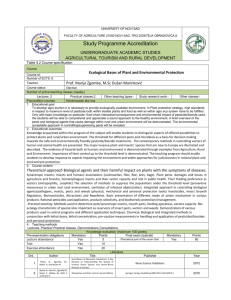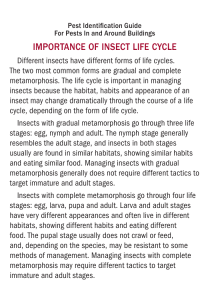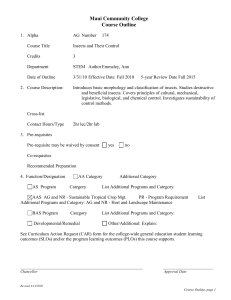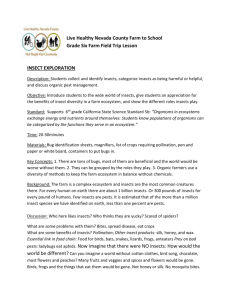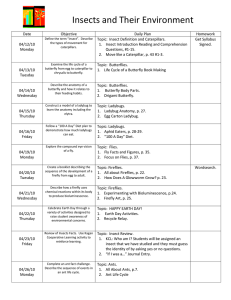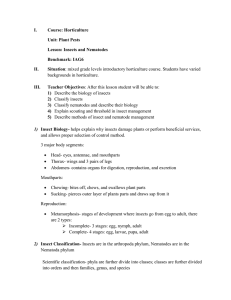SR quiz
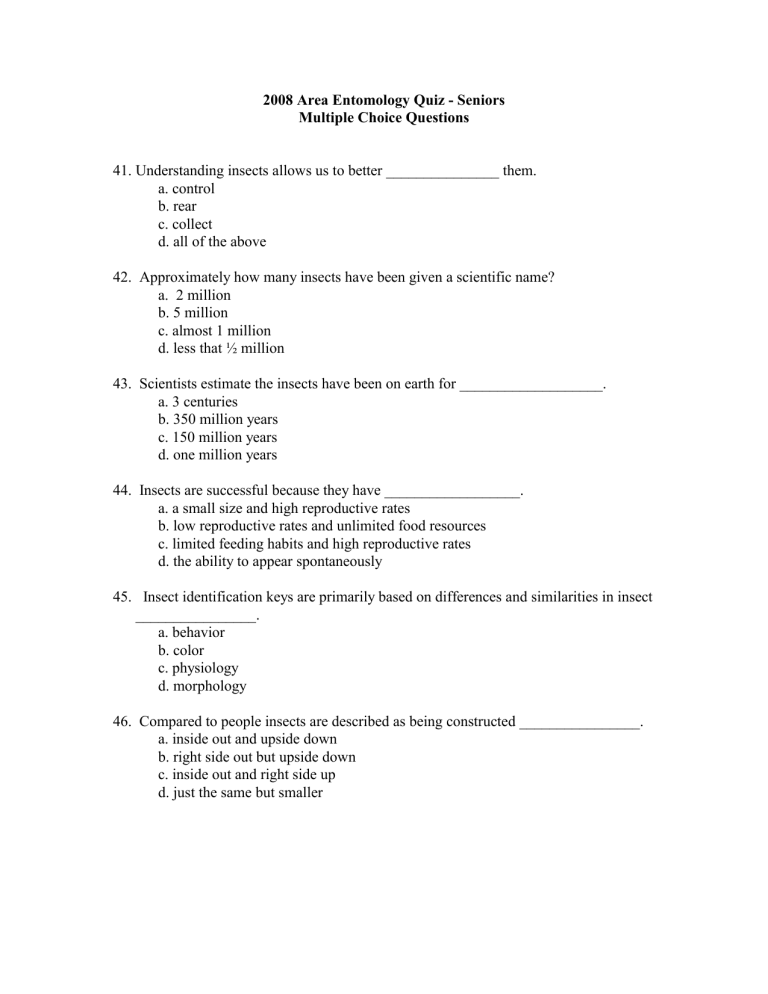
2008 Area Entomology Quiz - Seniors
Multiple Choice Questions
41. Understanding insects allows us to better _______________ them. a. control b. rear c. collect d. all of the above
42. Approximately how many insects have been given a scientific name? a. 2 million b. 5 million c. almost 1 million d. less that ½ million
43. Scientists estimate the insects have been on earth for ___________________. a. 3 centuries b. 350 million years c. 150 million years d. one million years
44. Insects are successful because they have __________________. a. a small size and high reproductive rates b. low reproductive rates and unlimited food resources c. limited feeding habits and high reproductive rates d. the ability to appear spontaneously
45. Insect identification keys are primarily based on differences and similarities in insect
________________. a. behavior b. color c. physiology d. morphology
46. Compared to people insects are described as being constructed ________________. a. inside out and upside down b. right side out but upside down c. inside out and right side up d. just the same but smaller
47. If a person called you and complained of a ‘worm’ with many ‘legs’ feeding on garden vegetables, you might assume which of the following to be true? a. It is probably a caterpillar because it is worm-like and people often count prolegs b. It is probably a centipede because it has lots of legs c. It has to be a millipede because it is feeding on a plant d. It has to be an earthworm because they said it is a worm
48. What would NOT happen if you held an insect’s head under water? a. it would get wet b. it would drown c. it would struggle to get free d. it would become agitated
49. Which of the following characteristics do immature Lepidopteran and Coleopteran insects share? a. They are all plant feeders b. They are all found in the soil c. They are all called nymphs d. They all have biting chewing mouthparts.
50.
Brown-banded cockroaches are primarily active during the ____________. a.
day b.
summer c.
spring d.
night
51.
Cabbage butterfly caterpillars mostly cause damage to ____________. a.
field crops b.
garden vegetables c.
turfgrass d.
flowers
52.
Ant lions belong to the order _____ . a.
Lepidoptera b.
Coleoptera c.
Neuroptera d.
Orthroptera
53. Which of the following statements is true of adult caddisflies? a.
They spend most of their time reproducing b.
They are nocturnal c.
They are short-lived d.
All of the above
54. Camel crickets have a characteristic _________ appearance. a.
hump-backed b.
square-shaped c.
flattened d.
hairy
55.
Japanese beetles lay their eggs during the ________ . a.
late fall b.
winter c.
mid summer d.
spring
56.
The primary cause of destruction to homes by carpenter ants is due to their _____ . a.
feeding and foraging practices b.
mating behaviors c.
carpenter ants do not cause damage to homes d.
nest building
57. Immature scales are called _____ . a.
sliders b.
gliders c.
crawlers d.
walkers
58. Walkingsticks ____ . a.
are pests to soybean farmers b.
are not considered pests c.
are pests to tree farms d.
are pests to homeowners
59. Vinegar flies have ______ eyes a.
blue b.
red c.
black d.
green
60. Tussock Moths damage forests and shade trees by ____ . a.
boring into the bark b.
eating the leaves c.
laying eggs near the roots d.
feeding on the surrounding nutrients needed by the tree

